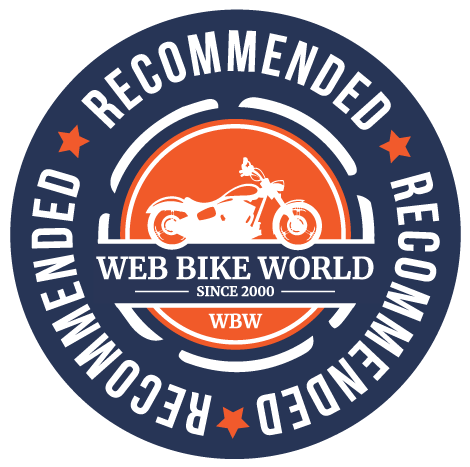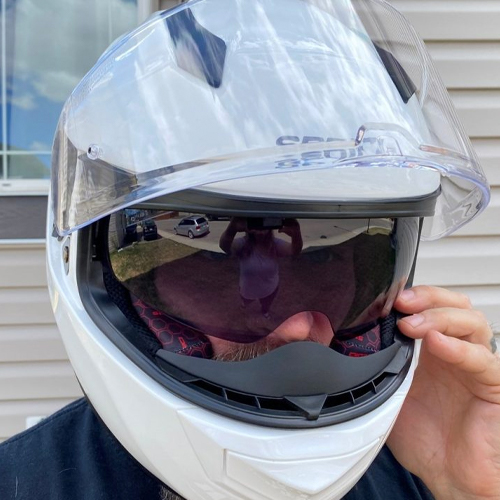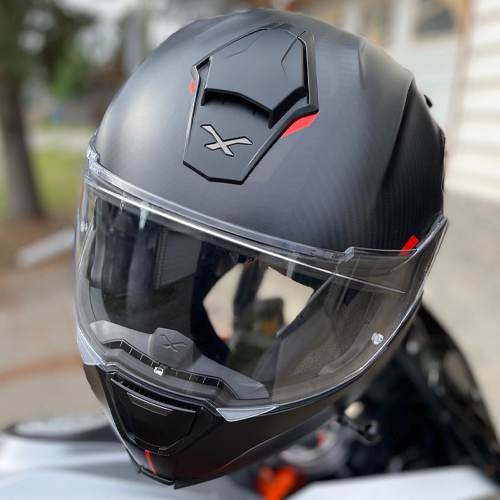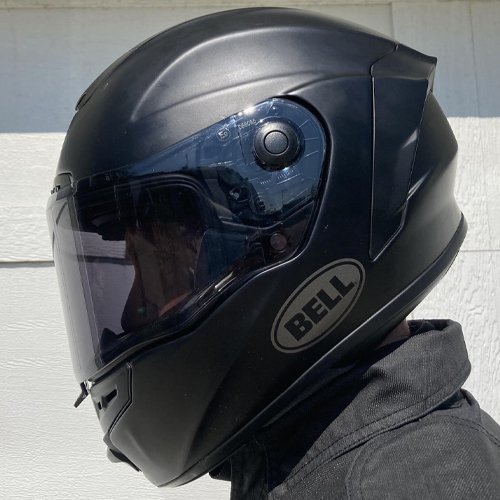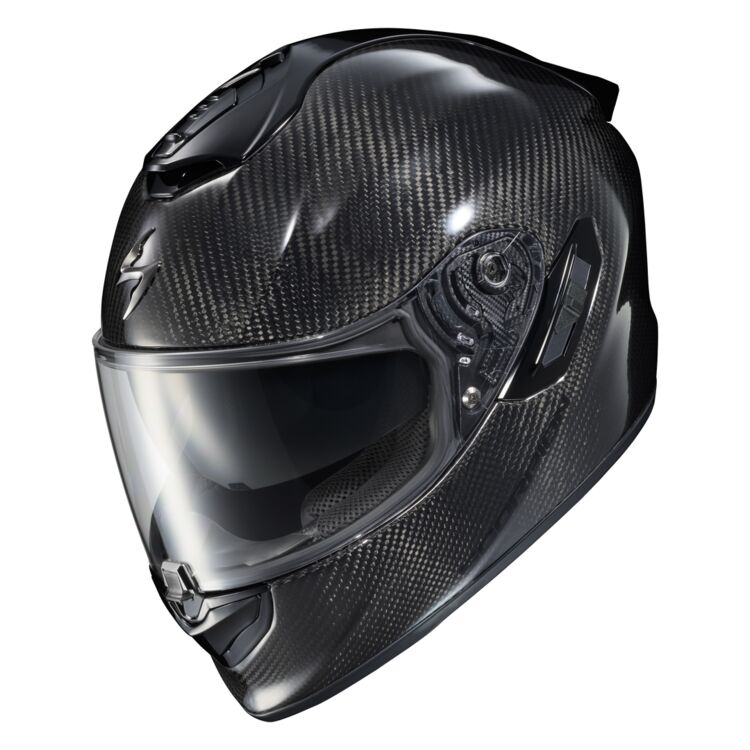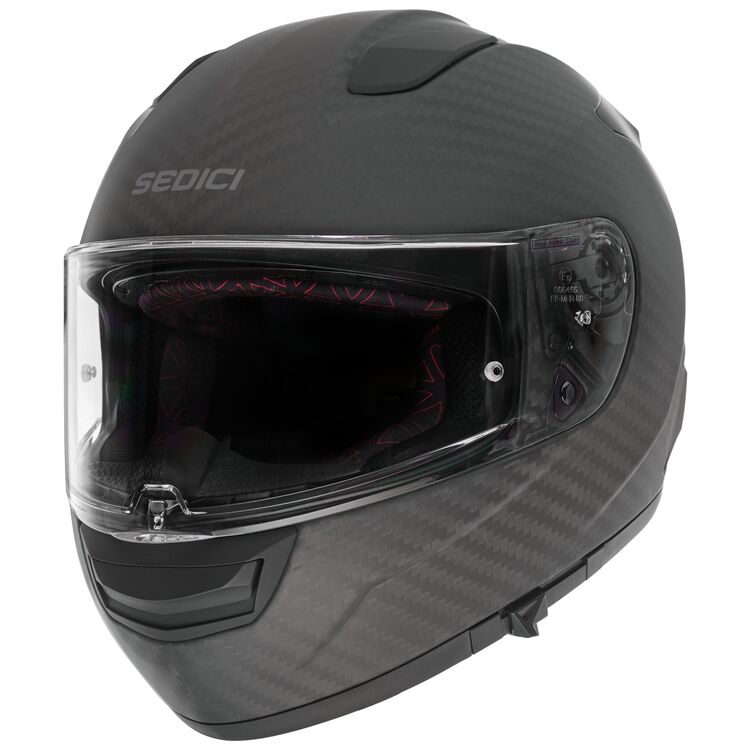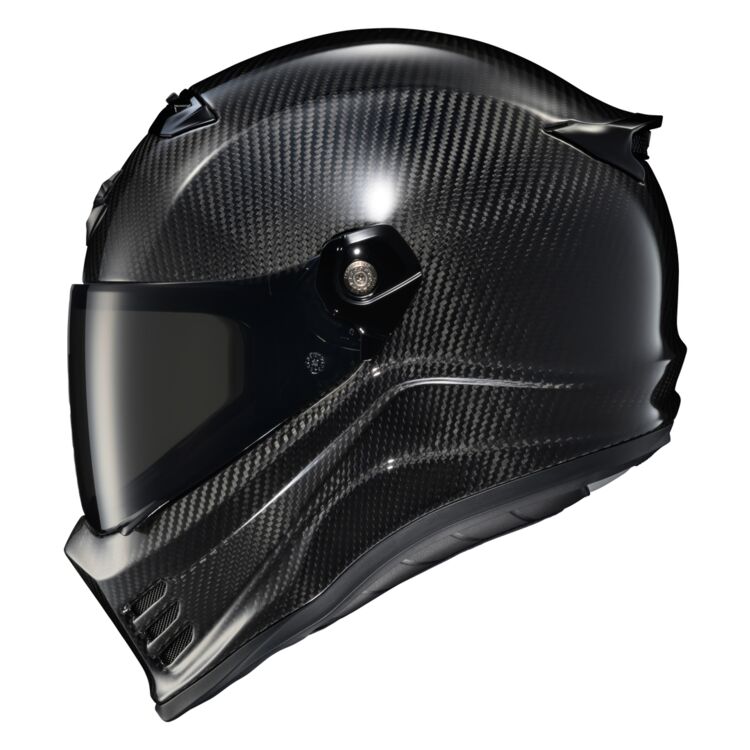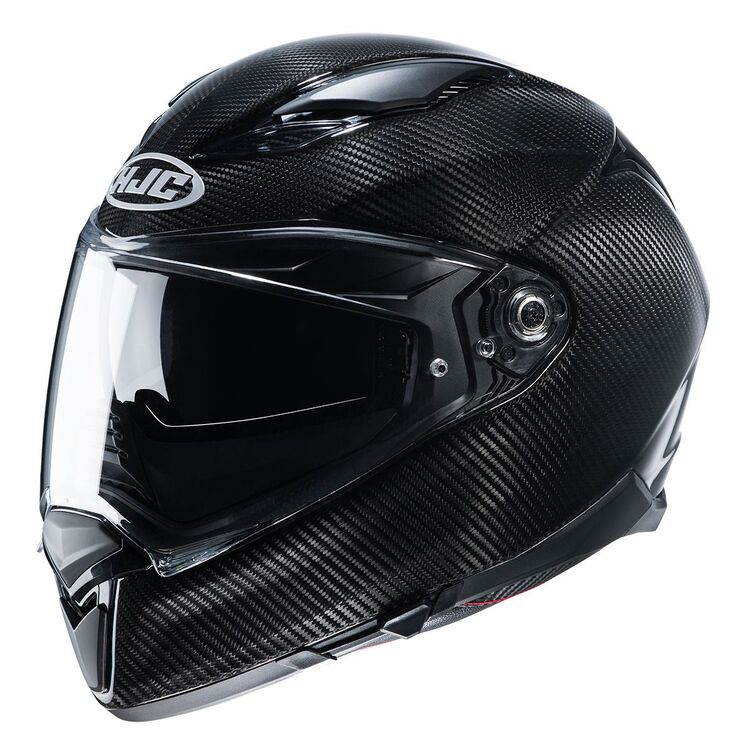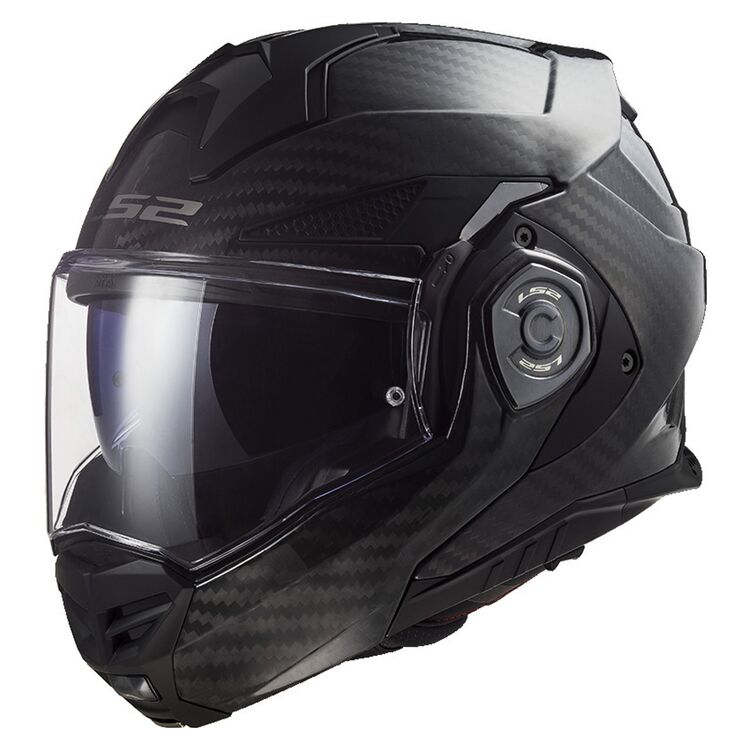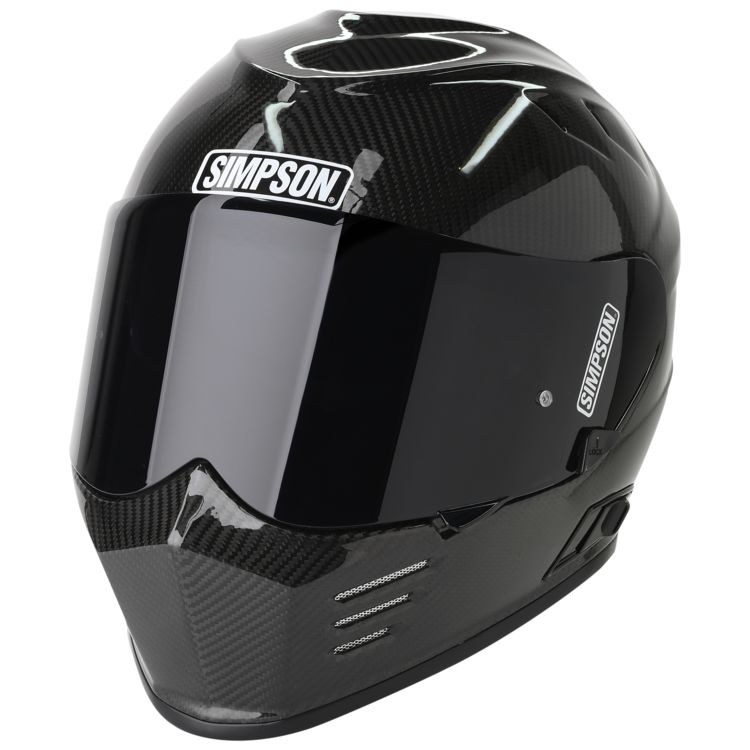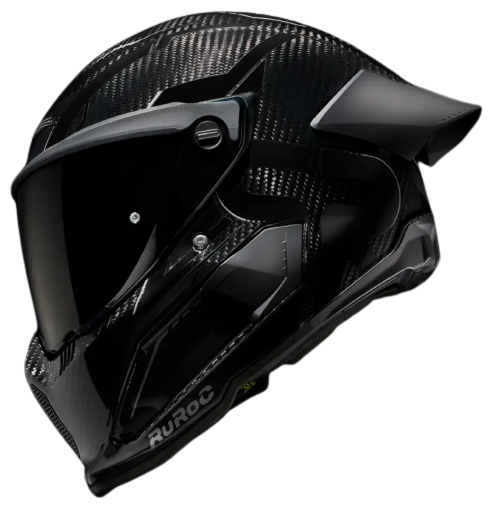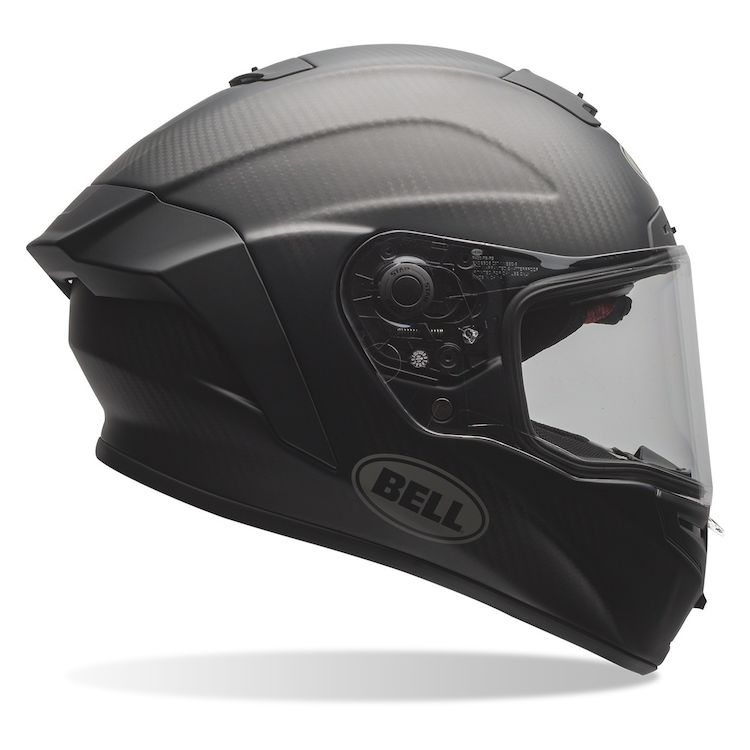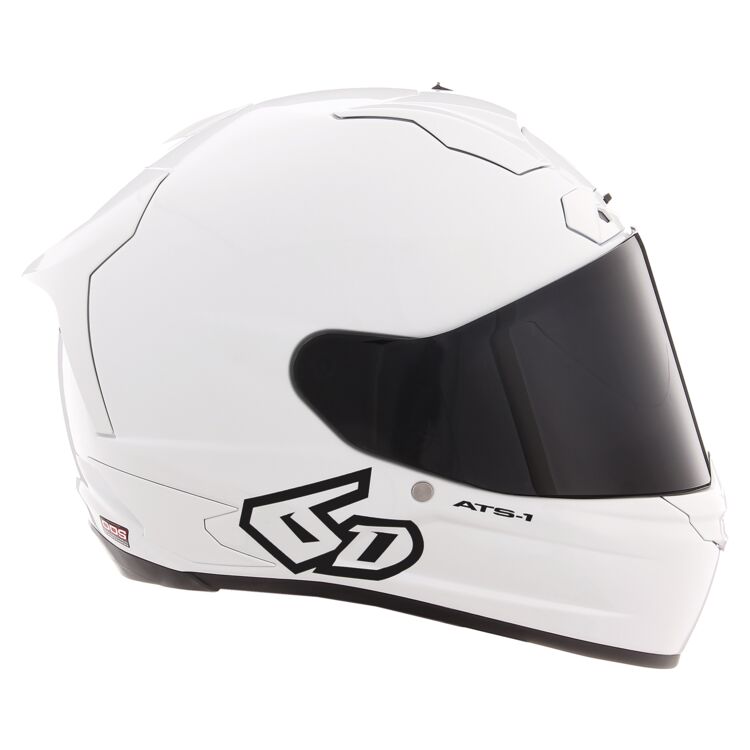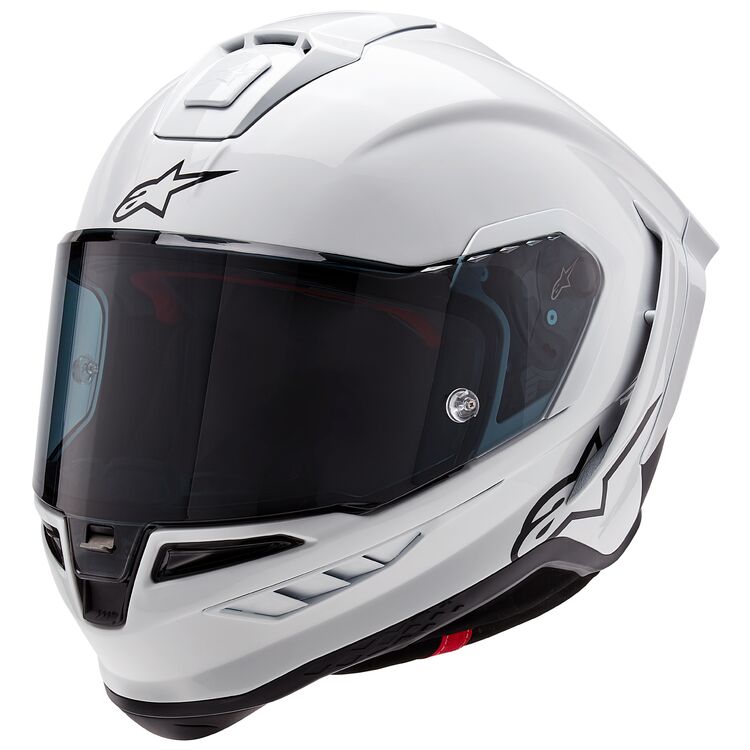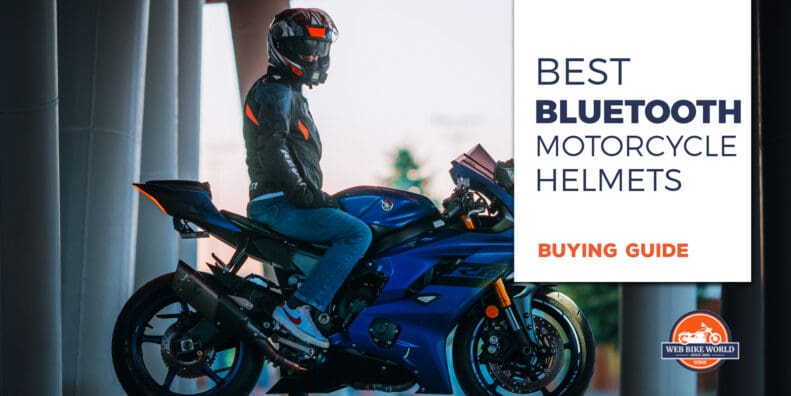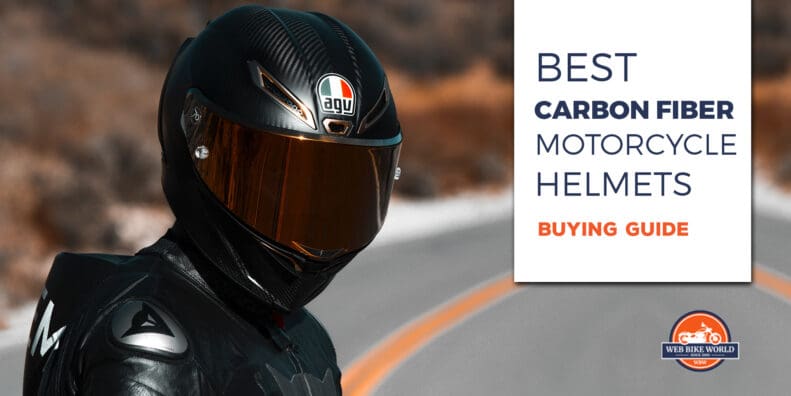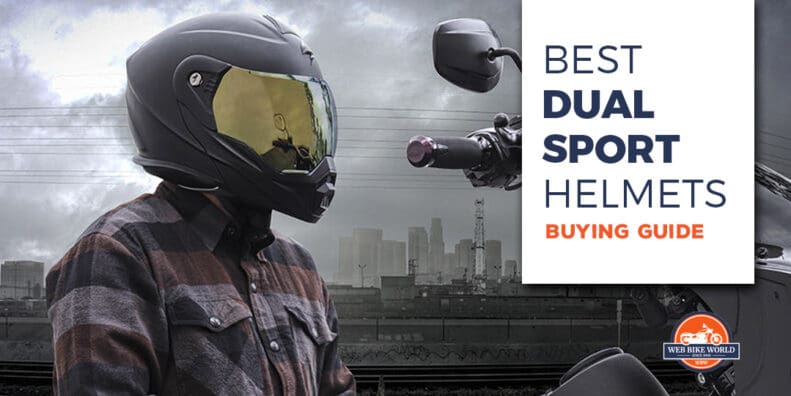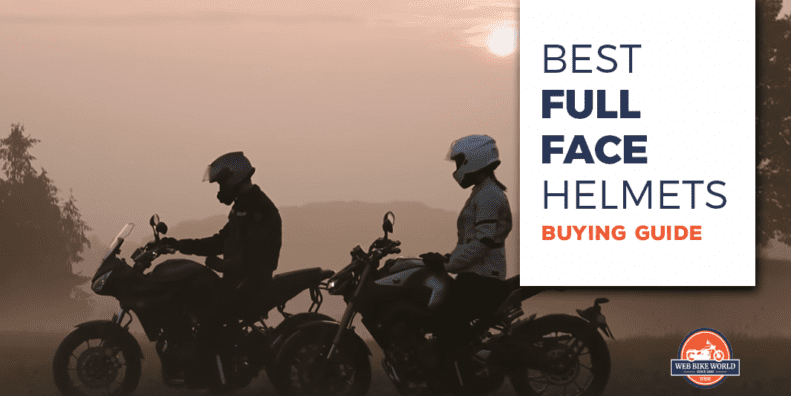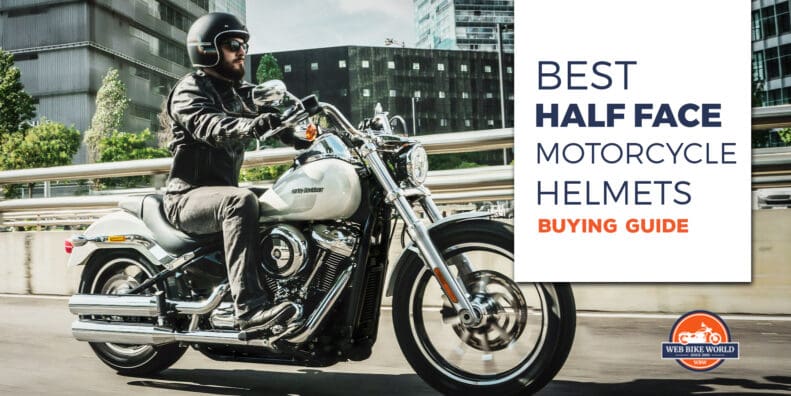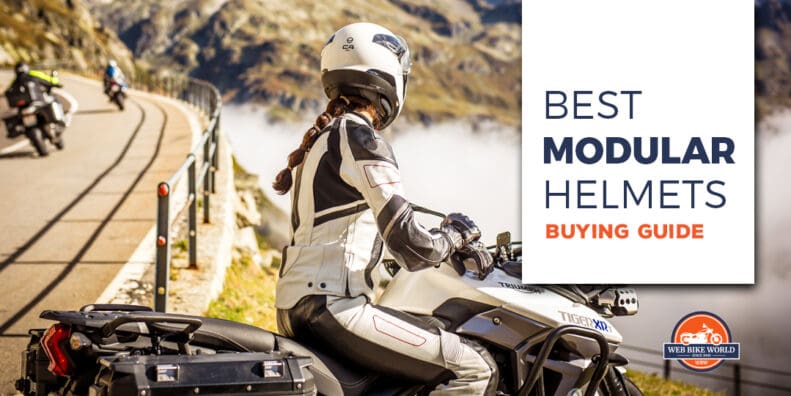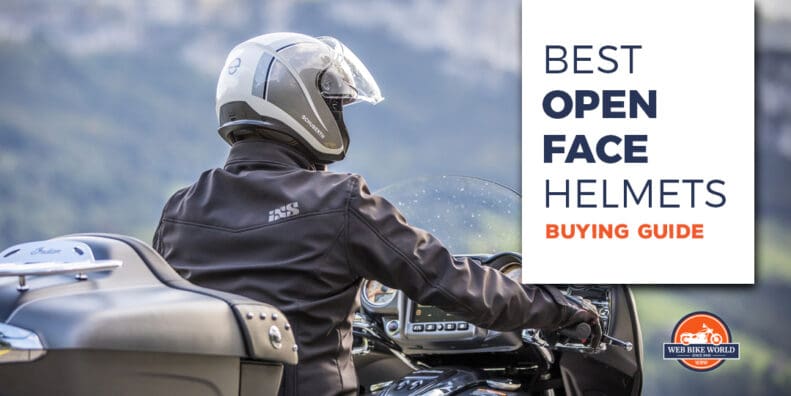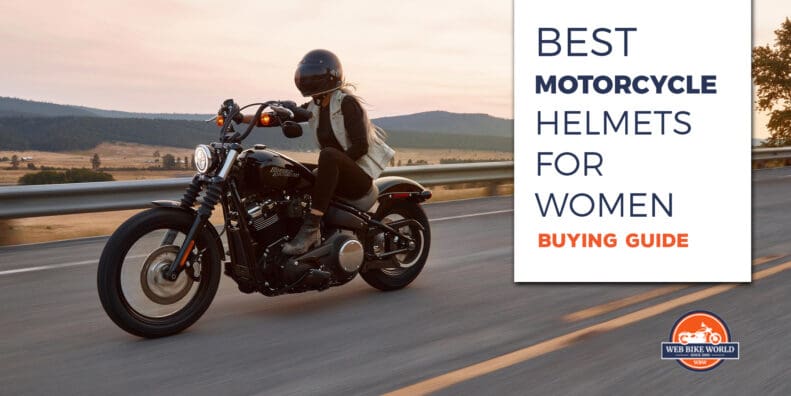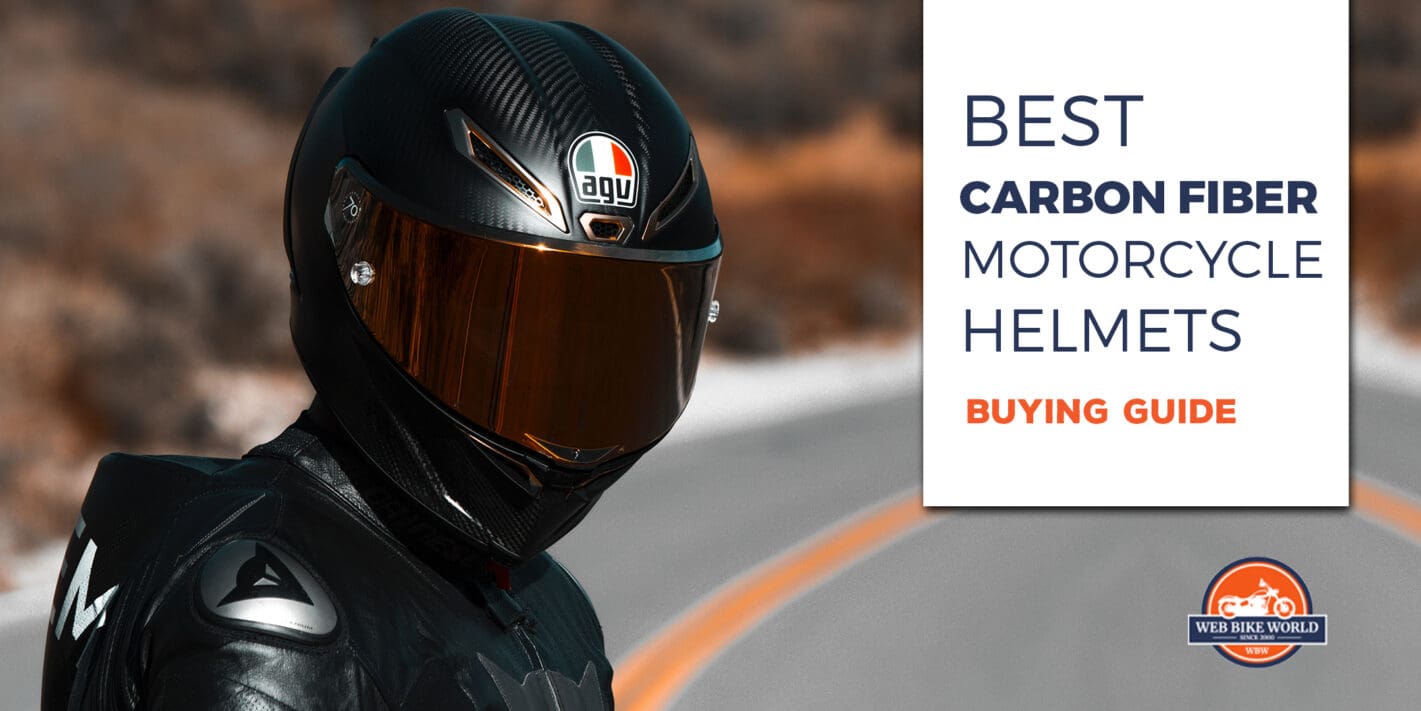
The Best Carbon Fiber Motorcycle Helmets for 2025
We'd know - we've reviewed 450+ helmets since 2000!
Our picks are based on helmets that offer the best blend of safety/performance, function/features, and price.
Last updated February 2025 by Devan Martel
About Our Carbon Fiber Helmet Recommendations
Founded in 2000, our team at wBW has collectively tested more than 2,500 helmets, jackets, boots, gloves, accessories, and more. We do not fluff reviews. A riders safety is heavily dictated by how they ride and what they wear while doing so. Our goal is to help riders make informed decisions about the gear they invest in to protect themselves.
wBW is funded by our audience. Our recommendations and reviews may contain affiliate links that earn us a small comission if you make a purchase after clicking them. This is the primary way we fund our website and pay our review team (and comes at no additional cost to you). We disclose our relationship with brands or manufacturers for transparency. For more information about our extensive review process, see our review policies.
Best Entry-Level Carbon Fiber Motorcycle Helmets
Priced under $500.
Scorpion EXO-ST1400 Evo
Why?
The EXO-ST1400 Evo is a top offering from Scorpion USA that has replaced the beloved EXO-ST1400 Carbon.
The shell is constructed from a resin-infused TCT-U 3K composite weave for superior impact energy protection. The EPS liner is well channeled for airflow via the aero-tuned ram air vents. Scorpions Kwik-Wick III anti-microbial liner material has a nice high-quality feel to it and is easy to remove for cleaning. Channels are provided for eyeglass wearers and the helmet is designed to accept the EXO-Comm system, or most other Bluetooth comm systems.
The drop-down No-fog Everclear sunvisor is simple to engage and has good quality optics. The eye-port is a good size and peripheral vision is quite good. Scorpion thankfully even provides the pinlock anti-fog inserts.
Key Specs & Head Shape
Head shape: Intermediate oval
Weight: 3.44 lbs
DOT or ECE? DOT & ECE certified
Our Review
Unfortunately, we haven't got our hands on the Scorpion EXO-ST1400 Evo. However, we do have a comprehensive review on it's predecessor, the ST1400 Carbon.
See our complete Scorpion EXO-ST1400 carbon review and find out why we loved it so much, and why we are certain you'll love the ST1400 Evo too!
Sedici Strada 3 Carbon
Price: $399.99
Where to Buy: RevZilla
Why?
Sedici’s latest generation Strada helmet is made from a proprietary blend of carbon fiber, nylon, DuPont Kevlar and military spec resin, creating a strong lightweight shell. The Strada 3 boasts four distinct shell sizes and six EPS sizes which is a major upgrade from the previous generation and ensures that the helmet you pick fits like a low profile lid.
The Strada 3 comes with the features you most want, like an internal sun-visor with a simple to use slide lever. Sedici provides removable padding at the temple area that can help with about 5mm of fitment adjustment. This is very effective at fine-tuning the fit for most riders. The styling is aggressive, and perfect for those with big skulls thanks to a sizing range that runs up to a 3XL.
On a side note, Sedici offers this helmet without the drop-down sun visor, it is called the Primo and carries a coveted Snell rating.
Key Specs & Head Shape
Head shape: Intermediate oval
Weight: 3.44 lbs
DOT or ECE? DOT & ECE
Our Review
We haven't had a chance to review the Strada 3 helmet as of yet, but check out the great things we had to say about the Strada II:
"This is a great fitting, comfortable, reasonably lightweight helmet with a dual DOT and ECE certification that is quieter than average. Add to that the great chinbar venting, a tendency not to fog up drastically or for very long (even sans Pinlock) and you’ve arguably got the best helmet for under $200 currently available. It’s really that good. I’m impressed and my scoring reflects that."
Scorpion EXO Covert FX Carbon Helmet
Why?
New on the scene is Scorpions latest release - the EXO Covert FX Carbon. This entry-level full-face carbon fiber helmet is jam packed with features at an extremely attractive price point.
Scorpion has more than delivered with this extremely lightweight TCT-U 3K carbon fiber shell with CAD-refined aerodynamics that offer riders a truly unmatched riding experience.
The Covert FX Carbon is rammed with more features than I can list, such as a aero-tuned ventilation system, dual position mouth vent, KwikWick III anti-microbial comfort liner, Comm-Ready speaker pockets, and so much more.
Key Specs & Head Shape
Head shape: Intermediate Oval
Weight: 3.14 lbs
DOT or ECE? DOT and ECE
Our Review
While we haven't had a chance to review the carbon fiber version of this lid, I had the pleasure of reviewing the Scorpion Covert FX in 2023. This helmet was a dream to ride in, and I can only imagine an enhanced experience in the Carbon lid.
HJC F70 Carbon
Price: $429.95+
Where to Buy: RevZilla
Why?
HJC has long had a reputation for building good quality, that look great and hold up when you need them to. The F70 carbon is no exception in that sentiment.
The HJC F70 has been on the market for a few years and has garnered attention for being a wallet-friendly choice that punches well above its weight class. Featuring ECE & DOT certification this lid is an excellent choice if you like your noggin intact.
The carbon variant of the F70 is just like its twin, but now featuring everyone's favourite material (at least we hope so if youre reading this list). Available for less than $500, The HJC F70 carbon can be had in a handful of stylish colour configurations, all of which put the carbon weave to the front & centre.
Key Specs & Head Shape
Head shape: Long oval
Weight: 3.4 lbs
DOT or ECE? DOT and ECE
Our Review
We have not yet tested the HJC F70 Carbon, however, we did get to try out the non-carbon version a few years back. Read the full review here.
Best Mid-Range Carbon Fiber Motorcycle Helmets
Priced $500 - $750.
LS2 Advant X Carbon Helmet
Price: $500
Where to Buy: RevZilla
Why?
When modular meets Carbon Fiber, what are you left with? The LS2 Advant x Carbon Helmet.
This helmet features a cutting-edge design and unbeatable functionality, with a perfect combination of style and protection. The 9K Carbon fiber shell is super lightweight and aerodynamic for a smooth ride in the worst of cross winds. The helmet also features LS2's well-praised ventilation system with multiple air intakes and exhaust ports for optimal airflow.
More importantly, the LS2 Advant X Carbon Helmet is certified to the newest ECE standards - ECE 22.06!
Key Specs & Head Shape
Head shape: intermediate oval
Weight: N/A
DOT or ECE? DOT & ECE certified
Our Review
LS2 if you're reading this please send us a lid to review!
On a more serious note, we do not have a hands-on review of the LS2 Advant X Carbon Helmet. However, that may change! Keep checking back regularly for updates on when we do.
Simpson Ghost Bandit Carbon
Price: $699.95
Where to Buy: RevZilla
Why?
Simpson has such a cool, badass look to the Bandit line of helmets, I love it.
Built with riders in mind, Simpson includes all the key features riders love honed through years of providing top-quality lids. The lightweight shell has been aerodynamically tuned for motorcycle riding and is fully ventilated for maximum airflow when you need it most. Integrated speaker and microphone pockets make it easy to install your favorite communication device and a drop-down sun visor makes riding through changing light conditions as easy as flipping a switch.
Simpson helmets tend to fit a bit small, keep that in mind when ordering. They are typically very comfortable, and this carbon version is on the lighter side of average.
Key Specs & Head Shape
Head shape: Intermediate oval
Weight: 3.31 lbs
DOT or ECE? DOT & ECE certified
Our Review
We have not yet tested the Ghost Bandit Carbon, but we do know that one will be coming our way relatively soon, so keep your eyes on webBikeWorld for that review! See all our Simpson coverage here.
Ruroc ATLAS 4.0 Track
Price: $650
Where to Buy: Ruroc
Why?
At the top of the Ruroc Atlas 4.0 range sits the Track - a slightly more aggressive variation on the middle child Carbon model.
Ruroc has been making some gorgeous motorcycle helmets for a couple of years. Now in its fourth iteration, the Atlas motorcycle helmet has improved on its predecessors and now offers some outstanding features.
The Ruroc Atlas 4.0 Track comes in at $650 and features a full carbon fibre shell (available in 5 unique colours) and features DOT, ECE, and ACU Gold certifications.
Key Specs & Head Shape
Head shape: Intermediate oval
Weight: 3.5 lbs
DOT or ECE? DOT and ECE
Our Review
We have not yet tested the Ruroc Atlas 4.0 Track, but we hope that one will be coming our way relatively soon, so keep your eyes on webBikeWorld! See all of our Ruroc coverage here.
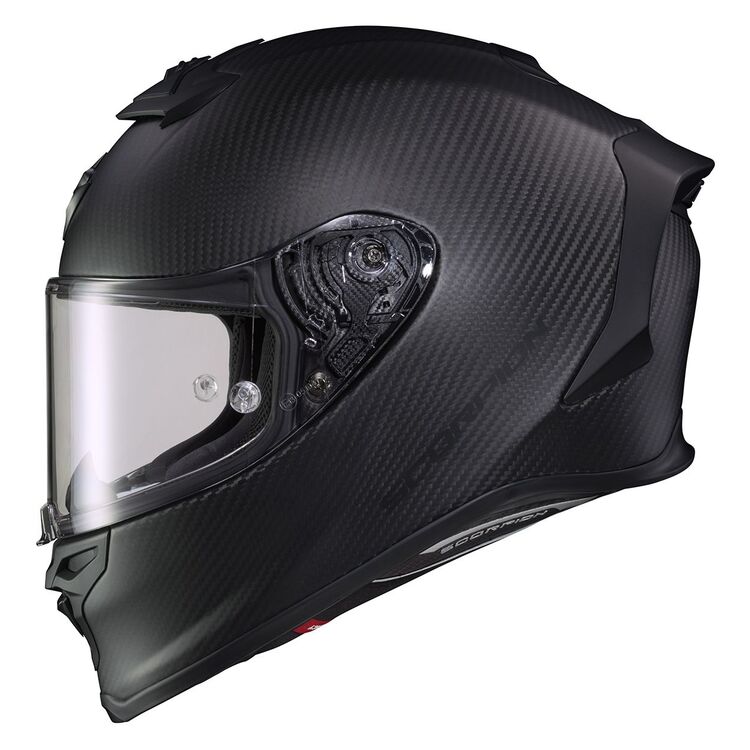
Scorpion EXO-R1 Air Carbon
Why?
In 2020, Scorpion USA released the EXO-R1 Air helmet as a street-going homologation version of their EXO-R1 GP MotoGP and WorldSBK competition helmets. These helmets received rave reviews and very little, if anything, was found to be wrong with them, unless you got extremely nitpick-y.
Released in Q2 2021, the EXO-R1 Air Carbon takes the same design of the EXO-R1, and replaces the fiberglass and aramid weave with full 3K carbon fiber weave construction. This is the same grade carbon fiber specification that is used in aircraft manufacturing, so it is extremely strong, yet flexible enough to dissipate some impact force all on its own.
The helmet combines that with a very quiet shell shape that literally cuts the air more than ramming into it, and one of the largest visors you can get on the market today. The ventilation system, while simple, is extremely effective, and the AirFit inflatable cheek pad system ensures you have a tight but comfortable fit, every ride.
The R1 Air Carbon carries DOT and ECE 22.05 certifications.
Key Specs & Head Shape
Head shape: Intermediate oval
Weight: 3.1lbs
DOT or ECE? DOT & ECE 22.05 certified
Our Review
We were able to spend some time with the EXO-R1 Air Carbon in the real world, riding in different weather conditions and at different times of day. Read our review here!
Best High-End Carbon Fiber Motorcycle Helmets
Priced over $750.
Bell Race Star Flex DLX
Price: $820
Where to Buy: RevZilla
Why?
Its lightweight 3K Carbon Shell uses an ultra-thin carbon fiber weave to create one of the strongest shells the industry has seen with that essential race look.
Bell tends to make great fitting helmets but takes things to another level with this lid. 5 EPS and 5 shell sizes allow a more proportional fit and improved performance, especially at high speeds. I have not had a chance yet to try it, but the Panovision ProTint Photochromatic face shield automatically adjusts to changing light conditions, this should be very useful.
Race Star helmets feature the Flex impact liner, using three different materials at three different densities. As the impact becomes greater, higher density layers are engaged to manage energy from three potential impact scenarios: low, mid, and high-speed.
Key Specs & Head Shape
Head shape: Intermediate oval
Weight: 3.57 lbs
DOT or ECE? DOT & ECE
Our Review
We have not yet tested the Bell Race Star Flex DLX, but we do know that one will be coming our way relatively soon, so keep your eyes on webBikeWorld for that review! See all our Bell coverage here.
6D ATS-1R Solid
Why?
I love the slogan at 6D, “Dedicated To The Relentless Pursuit Of Brain Protection.” I vibe strongly with companies that focus on safety above all else.
Starting from the outer shell made of carbon fiber, everything on the inside is unique to 6D. 6D’s Omni-Directional Suspension (ODS) starts working the instant any force is applied to the shell. Its suspended inner liner travels and shears under crash impact loading thereby reducing energy transfer to the brain. As a floating liner between the comfort and EPS liner, the ODS features an air-gap to allow for improved ventilation and nine total vents move air through the helmet.
Much more than just hype, this is a fresh approach to protecting the head during previously less studied low-speed impacts.
Key Specs & Head Shape
Head shape: Intermediate oval
Weight: 3.58 lbs
DOT or ECE? DOT & ECE
Our Review
I am extremely jealous of one of my fellow reviewers, Paul Johnston, as he had a chance to review the 6D ATS-1R! With an overwhelming amount of positive things to say, the full review is more than worth your time.
Alpinestars Supertech R10 Carbon Helmet
Why?
You might say that no Best Of list is complete without Alpinestars, and our Best Carbin Fiber Helmets is no exception.
The Alpinestars Supertech R10 Carbon helmet is last on our list because as the saying goes, we've saved the best for last.
The Supertech R10 Carbon has an impressive construction that utilizes multiple layers of high quality materials. A 3K high-density carbon outer layer, a uni-directional carbon composite layer, an aramid fiber layer, and a fiberglass layer all work in perfect unison to keep your noggin safe.
The helmet boats an impressive 220 degree of lateral vision and 57 degree of vertical vision for an extremely immersive, uncompromised riding experience.
Key Specs & Head Shape
Head shape: Intermediate oval
Weight: 3.55 lbs
DOT or ECE? DOT, ECE, & FIM certified
Our Review
We have not yet reviewed the Alpinestars Supertech R10 Carbon, but we will be sure to post it here once we have!
Frequently Asked Questions About Carbon Fiber Helmets
Are carbon fiber helmets safer than polycarbonate and/or fiberglass helmets?
In the broadest sense of the term “safer,” the answer is both yes and no. Yes, in that they provide the best weight-to-strength ratio of any helmet material, and are excellent at dissipation of impact energy across a wider area of the surface. On the other hand, no, as its rigidity can create a more focused surface shock at the point of impact, meaning that the EPS lining has to absorb a lot more energy there, while other helmets flex and spread out the point of impact.
The little sheet that came with my carbon fiber helmet says that I should replace it after 5 years. Why?
This is a “rule” across all types of helmets, as all materials degrade over time, even carbon fiber. While the shell material may still look and actually still be perfectly fine, it’s the EPS and padding inside the helmet that degrade the quickest. You can still wear a helmet after 5 years, for sure, but keep in mind that it will be half as effective, or even less so, as a new helmet.
Carbon fiber helmets sound awesome, are there any drawbacks?
As with any material, yes, there are. The biggest is price, as it is still a very expensive thing to make microscopically thin strands of carbon, and then weave it together, mold it to a shape, and bake it to cure it. Another is that carbon fiber is very rigid, and if exposed to enough force in exactly the right way, it can shatter or crack, although you should replace any helmet after any impact it takes of any significant force.
What is the difference between carbon fiber and carbon composite?
They are mostly the same thing. Carbon fiber refers to the individual fibers of carbon filament, which are often interwoven into a latticework. Carbon composite uses carbon fiber as the base material (not necessarily woven into a lattice), but uses a resin, sometimes with other fibers woven in with the carbon like aramid fibers or titanium filament, and cures in inert gas or vacuum at 98 C to create the composite material. Basically, all carbon fiber helmets are made of carbon composite material.
Are carbon fiber helmets worth the money, as they are usually over $400-$500?
That depends entirely on you, the rider, to decide. If you’re going to be riding for days on end or are taking part in racing weekends and full track days, the lighter weight will translate into less fatigue on your neck and shoulders, so for those scenarios, they’re definitely worth it. If you’re just riding around in the city, or commuting daily on your bike, then whatever helmet fits you best, has the features you want, and is the most comfortable is the one that’s worth it.
Who makes the best carbon fiber helmets?
That is a very subjective question, as everyone has their preferred brands. That said, companies such as Scorpion, Arai, Shoei, Bell, Schuberth, HJC, and the like, the “big names” in helmets, all subject their carbon fiber helmets to internal tests well beyond the requirements for DOT/ECE certification. Many carbon fiber helmets will also be voluntarily tested at SHARP in Europe or SNELL Labs in the USA, as those two are very well respected institutions that test helmets to destruction to see just what it takes to break them.
What To Look For In A Carbon Fiber Helmet
A full face helmet is by far the helmet type that is the most protective. Considering most helmet impacts are actually on the chinbar, a full face is the best equipped to keep you safe. When we visited the Snell Memorial Foundation, Ed Becker - the managing director at the time - advised us that the best helmet is the one that fits you comfortably and you'll actually wear. So, there's that.
Assuming you've already sorted yourself a lid that fits, you should also consider:
DOT/ECE certifications—Many inexpensive full face helmets showing up on Amazon and eBay are not DOT or ECE certified. This certification may save your life. Don’t cheap out—remember, you’re preparing for the slide, not the ride.
Comfort— Most of the helmets featured on this page use lightweight materials to minimize neck strain—useful, especially on long rides.
Head shape—While most people are an intermediate oval, not all are. Make sure you get a helmet designed for your head shape.
Shell material—Polycarbonate is okay, but you’d be better served with carbon fiber (expensive) or fiberglass. All the helmets called out here (save for one) are fiberglass.
Interior liner—All the helmets featured here offer removable liners that are anti-moisture and anti-bacterial. Avoid non-removable liners (found in cheap helmets)—it’ll be a stink factory before you know it.
Intercom compatibility— Riders that want to stream audio, get navigation prompts from their phone, or talk to their friends while on the road will want to make use of a bluetooth intercom (see also: our picks for the best motorcycle intercoms). Many helmets come with speaker pockets already formed inside the liner; they will be much more comfortable to wear with an intercom compared to a lid that does not have speaker pockets. Definitely factor this into your decision, as there's nothing more frustrating than your needs changing shortly after buying and being left with no option other than purchasing another lid.
Read the complete motorcycle helmet buyer's guide for more information.
At WBW, “Best” Actually Means Something
Remember when you could open up a review of something, and when the publication—magazine, car show, whatever—said “best” they stood behind it? Yea, we remember, and we’re bringing it back.
Here’s how we do things:
We disclose our affiliate relationships—We make money via advertising and affiliate relationships on our website. It’s how we pay our team and invest in things like sending Jim to Italy. And Japan. And France… wait… why do we always send Jim places?
We obsessively hands-on test—We wear and ride with gear before reviewing it, and we update reviews down the line if our opinions change. We look at real-world situations because that’s the world we live in.
We’re objective—Good gear is good gear, regardless of who made it.
We’re value-focused—Why pay $500 if something for $250 is just as good? Our review scores and recommendations reflect best value. Brand only goes so far—the gear has to stand on its own.
